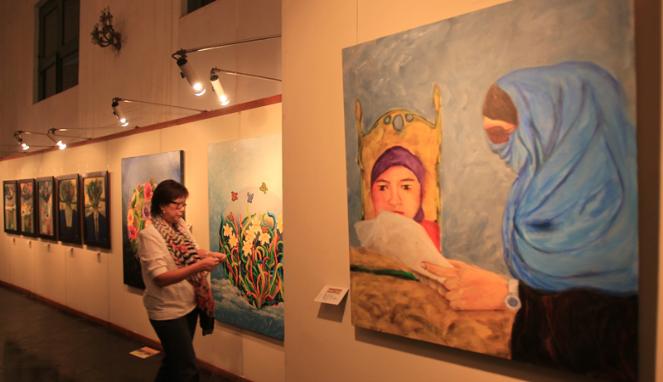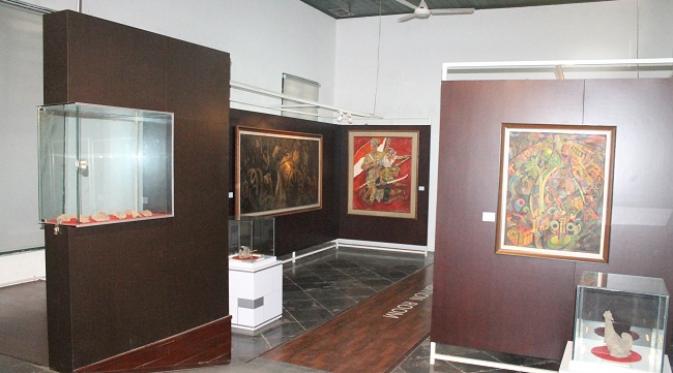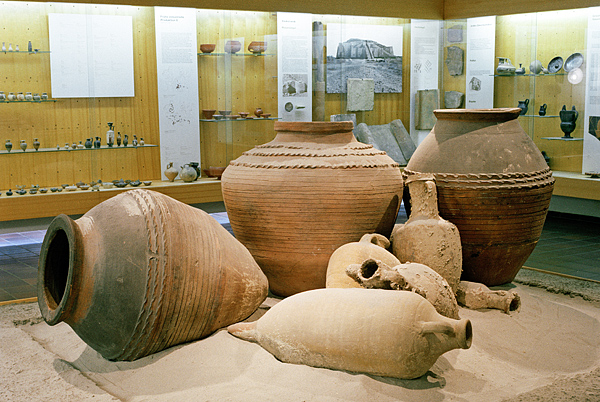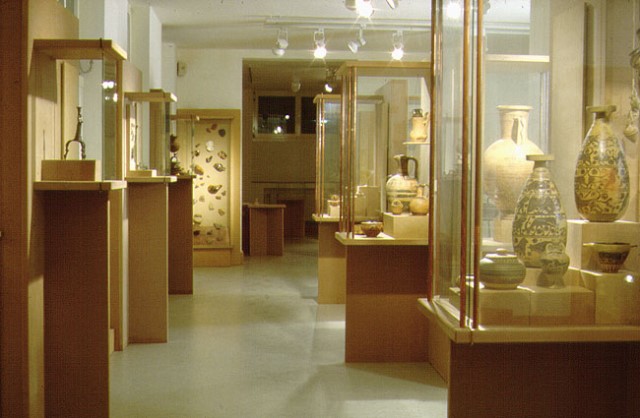For art lovers, Museum of Fine Arts and Ceramics in Jakarta is one of the must visit museums.
The building of Museum of Fine Arts and Ceramics was completed on 12 January 1870. During Japan and Dutch colonialism, this building was used for military dormitory and supplies storage. When Indonesia got independence in 1967, the building was utilized as West Jakarta Mayor’s Office until 1973. In 1974, it was renovated and used as Jakarta’s Museum and History Agency office and finally as officiated as Museum of Fine Arts and Ceramics in 1990.
The room in the Museum divided in several main space: a collection of ceramics, photo collections and a collection of sculptures from the Asmat tribe and others. The art collection was divided into several rooms by period of history as follows:
- Raden Saleh room (works of the period from 1880 to 1890)
- Hindia Jelita room (works of 1920s period)
- Persagi (works of 1930s period)
- Japanese Occupation room (the works of 1942-1945 period)
- Establishment Studio room (works of the period 1945-1950)
- The Birth Academic Realism room (the works of 1950s period)
- New Art Indonesia room (the works from 1960s period – present)
The museum has around 500 fine art works from various time periods. Those art works were made of different materials and processes, such as wooden totem, sketch, Batik painting, and many more. If you love painting, you’ll love to visit this museum, as it has many painting collection with various genre (surrealist, romantic, abstract—you name it). The paintings made by Indonesia’s famous artists such as Raden Saleh, Affandi, S. Sudjojono and many more are displayed in this museum.


As it name implies, you also can find ceramics collection in this museum. There are many ceramics both from Indonesia as well as other countries. Ceramics from Indonesia mostly were produced in Aceh, Medan, Palembang, Lampung, Jakarta, Bandung, Bali, Lombok, and many other cities. It also has Majapahit ceramic from the 14th century, which show beautiful extraordinary characteristic and have history value with various shapes and functions.
One of the interesting things about ceramic collections in this museum is the magnificent collection of ceramics from China. There are collections of ceramics from Ming and Ching Dynasties (14th century). Most of the ceramic collections in this museum are originated from China. Some of collections also came from Japan, Thailand, and few countries in Europe.


If you want to know more about the history of ceramics and arts in this museum, there is a library in Museum of Fine Arts and Ceramics. Want to try making ceramics? You also can do it in this museum. In the Studio Gerabah (Ceramics Studio), you can join ceramic making class (for student and publics)—where you’ll learn about the basic methods of ceramic crafting.
Overall, the museum is well maintained—with a nice layout and good lighting. The rooms are well air-conditioned. In the middle of the museum, there are two beautiful yard with lush trees, equipped with benches for visitors to sit at. It’s nice to sitting there after walking around the museum.
The entrance fee to the Museum are Rp5,000 (adults), Rp3,000 (college students), and Rp2000 for school kids and children. It is opens from Tuesday to Sunday from 9am to 15pm, and closed at Monday and public holidays.
Museum of Fine Arts and Ceramics
Jalan Pos Kota No 2 (Kota Tua), West Jakarta
Phone 021-6926090





